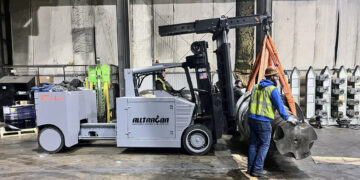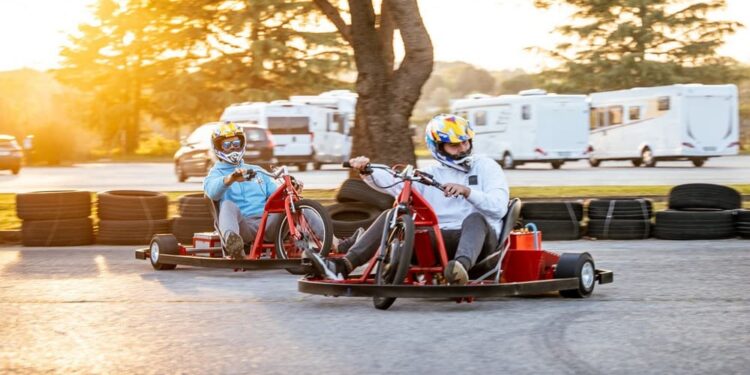Drift karting has emerged as an exhilarating motorsport that combines the accessibility of go-karting with the technical skill and showmanship of drifting. This high-octane activity has gained significant popularity among driving enthusiasts who seek the adrenaline rush of controlled slides without the massive investment required for full-scale drift cars. From purpose-built machines to innovative modifications, drift kart offers an exciting entry point into the world of precision driving and has developed its own distinct community and competitive scene.
What Exactly Is Drift Karting?
Drift karting refers to the practice of intentionally oversteering a go-kart, causing the rear wheels to lose traction while maintaining control and direction through corners. Unlike traditional go-karting, which emphasizes grip and fastest lap times, drift karting celebrates the controlled slide, with drivers judged on their ability to maintain a drift angle, follow specific lines, and demonstrate technical skill and style.
The fundamental difference between standard karting and drift karting lies in the physics of motion. Traditional karts are designed to maximize grip and minimize sliding, whereas drift karts are specifically built or modified to break traction and slide predictably. This requires a unique combination of vehicle design, driver skill, and specialized track conditions.
The Evolution of Drift Karts
The origins of drift karting can be traced back to enthusiasts who began modifying conventional go-karts to achieve greater slide capabilities. These early experiments often involved simple modifications such as PVC pipe sleeves over rear tires or homemade slick surfaces to reduce traction. However, as interest grew, dedicated drift kart designs emerged.
Modern drift karts typically feature several key modifications:
- Specialized Rear Tires: Often made of hard plastic, PVC, or wrapped in slick materials that intentionally provide less grip than conventional rubber tires.
- Adjusted Power-to-Weight Ratios: Many drift karts utilize higher horsepower engines to facilitate breaking traction more easily.
- Modified Chassis: Frames with specific geometry that encourages oversteer and controllable slides.
- Custom Steering Systems: Enhanced steering angles and responsive controls to allow drivers to correct slides and maintain precision.
- Handbrakes: Some advanced drift karts incorporate handbrakes to initiate and control drifts more precisely.
Commercial manufacturers have recognized the growing market for drift karting, with companies now offering purpose-built drift karts with all these features integrated from the factory. Electric drift karts have also gained popularity, offering instant torque delivery that can easily break traction on demand.
Technical Aspects of Drift Karting
The physics behind drift karting involves a delicate balance of forces. When a driver initiates a drift, they deliberately upset this balance by using techniques such as weight transfer, throttle control, and steering input to break traction at the rear wheels while maintaining directional control.
Key technical elements include:
Power Delivery: Unlike traditional karts that deliver power smoothly, drift karts often utilize abrupt power delivery to help break traction. This can be achieved through engine modifications or, in electric karts, specialized controller settings.
Weight Distribution: The distribution of weight significantly affects how a kart drifts. Most drift karts feature a slightly rear-biased weight distribution to help the back end step out predictably.
Suspension Settings: While many basic karts lack traditional suspension, more advanced drift karts incorporate elements that allow for tuning how weight transfers during cornering.
Surface Interaction: The relationship between the tire material and track surface is crucial. Different surfaces require different tire compounds and hardnesses to achieve optimal drift characteristics.
The Skill Behind the Slide
Drift karting requires a distinct skill set that differs from traditional racing. Drivers must develop:
Anticipation: Successfully drifting requires drivers to think several steps ahead, anticipating how the kart will respond to inputs and planning drift transitions before they occur.
Balance: Maintaining the perfect drift angle requires constant subtle adjustments to throttle, steering, and body weight.
Spatial Awareness: Drift lines often differ from racing lines, requiring drivers to visualize and execute complex trajectories while the kart is sliding sideways.
Recovery Techniques: When drifts go wrong, skilled drivers can recover without spinning out through counter-steering techniques and throttle modulation.
Professional drift kart drivers often describe the experience as “controlled chaos,” requiring simultaneous technical precision and intuitive feel. Many compare the learning curve to that of riding a bicycle—difficult to explain verbally but becoming second nature once mastered.
Competitive Drift Karting
While many enjoy drift karting recreationally, competitive events have emerged with structured formats and judging criteria. These competitions typically evaluate drivers on:
- Drift Angle: The angle at which the kart slides relative to its direction of travel.
- Line Adherence: How closely drivers follow the intended course while drifting.
- Style and Flair: The smoothness of transitions and overall aesthetic of the performance.
- Speed: While not the primary focus, maintaining momentum throughout drifts is still valued.
Competitions range from grassroots local events to international series with standardized karts to ensure driver skill remains the determining factor. Some events feature tandem battles where drivers compete head-to-head, attempting to follow each other closely while maintaining their drifts—a true test of precision and nerve.
Accessibility and Community
One of drift karting’s greatest strengths is its accessibility compared to full-scale motorsports. The entry costs, while higher than standard karting, remain fraction of what’s required for drifting modified street cars. This approachability has fostered a diverse and passionate community spanning various demographics and skill levels.
Drift karting communities have flourished both online and at local tracks, with enthusiasts sharing modification tips, driving techniques, and organizing meet-ups. These communities often embrace the DIY spirit, with many participants building or modifying their own karts rather than purchasing ready-made options.
Safety Considerations
Despite its wild appearance, drift karting can be relatively safe when proper precautions are taken. Modern drift kart facilities typically require:
- Full-face helmets and protective clothing
- Roll bars or cages on higher-powered karts
- Track designs with appropriate runoff areas
- Speed-limiting features for novice drivers
- Comprehensive safety briefings before sessions
The lower speeds compared to full-scale drifting, combined with the kart’s low center of gravity, mean that most incidents result in minor spins rather than dangerous crashes. Nevertheless, the sport still demands respect and appropriate safety measures.
The Future of Drift Karting
As drift karting continues to evolve, several trends are emerging that may shape its future:
Electric Innovation: Battery-powered drift karts are becoming increasingly sophisticated, offering programmable power delivery characteristics that can be adjusted to suit different drivers and conditions.
Simulator Training: Virtual drift kart simulators are being developed to help drivers practice techniques before hitting the track, accelerating the learning curve.
Hybrid Competitions: Events combining elements of traditional racing and drift scoring are gaining popularity, rewarding both speed and technical showmanship.
Environmental Considerations: As motorsports face increasing pressure to reduce environmental impact, electric drift karting is positioned to offer a more sustainable alternative to combustion-powered options.
Drift karting represents the perfect intersection of accessibility and technical challenge, offering the thrill of controlled slides without the massive investment required for full-scale drifting. Whether enjoyed recreationally or competitively, this growing motorsport continues to attract enthusiasts drawn to the unique sensation of piloting a vehicle on the very edge of control. As technology and techniques evolve, drift karting stands poised to slide sideways into an exciting future.































